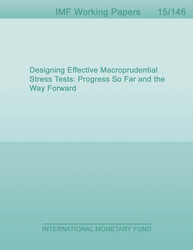
Designing Effective Macroprudential Stress Tests : Progress So Far and the Way Forward
Giving stress tests a macroprudential perspective requires (i) incorporating general equilibriumdimensions, so that the outcome of the test depends not only on the size of the shock and thebuffers of individual institutions but also on their behavioral responses and their interactions witheach other and with other economic agents; and (ii) focusing on the resilience of the system as awhole. Progress has been made toward the first goal: several models are now available thatattempt to integrate solvency, liquidity, and other sources of risk and to capture some behavioralresponses and feedback effects. But building models that measure correctly systemic risk and thecontribution of individual institutions to it while, at the same time, relating the results to theestablished regulatory framework has proved more difficult. Looking forward, makingmacroprudential stress tests more effective would entail using a variety of analytical approachesand scenarios, integrating non-bank financial entities, and exploring the use of agent-basedmodels. As well, macroprudential stress tests should not be used in isolation but be treated ascomplements to other tools and—crucially—be combined with microprudential perspectives.
Publication date: June 2015
ISBN: 9781513513621
$18.00
Add to Cart by clicking price of the language and format you'd like to purchase
Available Languages and Formats
| English |
Prices in red indicate formats that are not yet available but are forthcoming.
Topics covered in this book
This title contains information about the following subjects.
Click on a subject if you would like to see other titles with the same subjects.
Economics- Macroeconomics , Economics / General , International - Economics , contagion , solvency , bank , risk , capital , balance sheet , General , Financial Forecasting and Simulation , Government Policy and Regulation
Summary
Copyright © 2010 - 2024
Powered by:
AIDC



